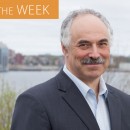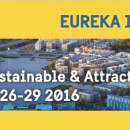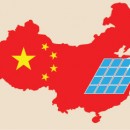Building A Secure Energy Future
- -
The Value of On Site Generation
Carl Pope, chairman and former executive director of the Sierra Club commented that more than a billion people worldwide lack access to electricity. Pope believes the best way to bring electricity to them — while reducing greenhouse gas emissions — is to launch a global initiative to provide solar panels and other forms of distributed renewable power to poor villages and neighborhoods.
And so kudos to St. Thomas University and its partners who recently completed a major photovoltaic solar energy project in Miami’s Sister-Diocese of Port-de-Paix, Haiti. Completed in December 2013 the projects are now providing free, sustainable electricity to an area with no roads, little water, and no public electricity. Programs like St. Thomas’ collaboration with local parish and women’s religious community leaders in Haiti to provide sustainable solar energy solutions reduce the area’s dependence on charcoal, give hope for the reforestation of the land, and provide much needed income to the participants involved.
“In practical terms solar power projects in communities without grid access allow for increased capacity to deliver health and education programs,” commented Dr. Alexandre Pavlovski, President and CEO of Green Power Labs Inc. “There is also growing interest in designing and building communities with a capacity to be energy self-sufficient. As concern around energy cost and security deepens, smart communities realize that effective urban energy planning improves energy security, attracts and retains citizens and supports climate change initiatives.”
Pavlovski added “Every community has access to clean energy. Effective use of solar energy on building roofs and walls requires a community to create an inventory of its available solar energy resource.”
Green Power Labs builds urban solar resource maps to locate and quantify clean energy assets. These GIS based, interactive maps give municipal governments’ significant flexibility in considering the impact of clean energy generation opportunities on land use policies, structuring energy incentives, project development, urban planning, solar rights and access laws. Urban solar resource mapping is the first step needed to support clean energy deployment and sustainable energy planning.
Picture: Crew smiles after installing solar panels on the roof of the cathedral rectory in Port-de-Paix.
Courtesy photo Juan Mirabal














